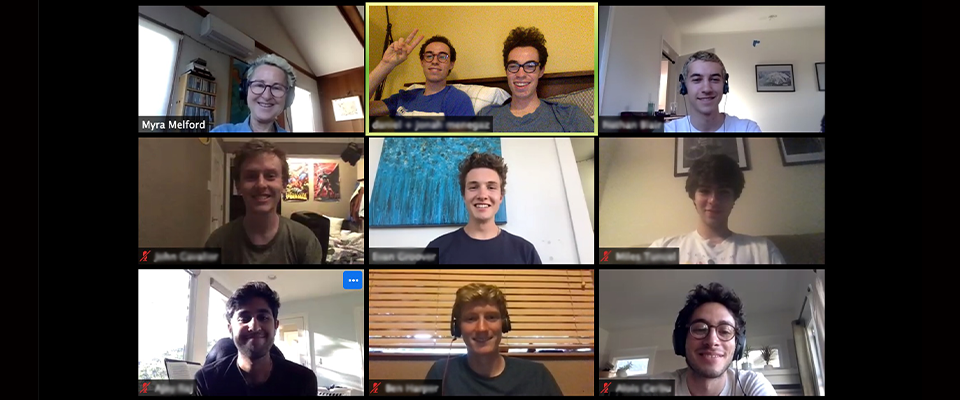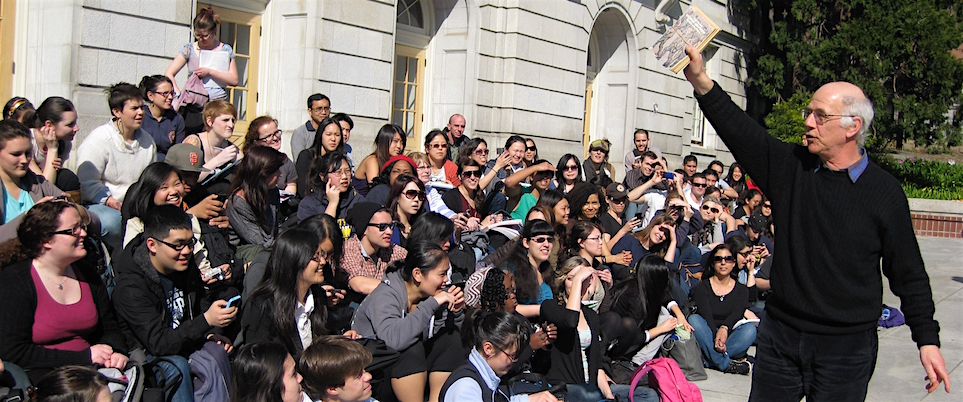UC Berkeley’s spring semester has been anything but normal. On March 13, the university announced that the remainder of the semester would take place online because of the coronavirus outbreak. This was not the first time that alternative instruction has been necessary at Cal. Just last fall, after PG&E shut down power to campus due to extreme fire risk, classes were suspended for a week, forcing professors to prepare for the possibility of extended online teaching.
But for Berkeley, like hundreds of universities nationwide, moving all instruction online for the rest of the year was completely unprecedented. In a matter of days, professors had to adapt their entire curricula—including labs, discussion sections, and hands-on art classes—to Zoom video conferencing. A few took time out to share lessons from their experience with California.
Learn to Improvise
Myra Melford, a professor of music, was teaching an improvisation seminar to a relatively small group of 45 students. But her class, which was structured around in-person discussions and guest speakers, took a nosedive. At first, several speakers—including a composer, a musician and a chef—canceled their appearances. Then, students stopped logging in to Zoom altogether.
“I just don’t sleep much. But I’m telling myself that the regular lecture and recording it on Zoom would somehow have been a lost opportunity.” —Anindita Adhikari.
She decided to check in with each absentee individually and found most to be very forthcoming about their situations: Some were sick while others simply struggled to focus in an online setting.
With this feedback, Melford restructured her class, holding small group discussions of just four to five students.
“This was my first time teaching this class, and I put a lot of effort into designing it,” said Melford. “I’ve had to do a lot of revamping of the assignments to deal with the shelter-in-place, and so it’s been a lot of work but I didn’t want to give up on it. It’s a class and an idea that I really believe in.”
Be Flexible
From the beginning, Carlos Noreña, an associate professor of history specializing in Roman history, has prioritized the needs of his students. When campus closed, he contemplated ending class altogether out of concern for the wellbeing of his students, especially those with difficult home situations or limited internet access. After some deliberation, he decided to drastically scale back course assignments, shrinking page counts for research papers and halving the scope of the final exam. He started recording his lectures ahead of time, giving his students more flexibility to watch whenever their schedules and internet access permitted. He also offered them the option of completing a short write-up of their weekly readings instead of attending the live discussion sections.
“My general approach to the whole class has been to try to strike a balance between preserving some structure and consistency for those who want or need that, while also trying to make it as open-ended as possible so that students facing different kinds of challenges and crises don’t feel additional pressure from this class.”
He understands that many of his students are feeling emotionally strained because of COVID. He feels it too. On top of preparing lectures and meeting administrative deadlines within the department, Noreña works constantly with his graduate student instructors (GSIs) to make sure discussion sections are running smoothly.
Working from home has also meant navigating personal and professional boundaries. In addition to helping his two teenage sons with their schoolwork, he’s sharing “classroom” space with his wife who teaches seventh grade. “So when I give my lecture I have to check in with everybody in the house and say, okay, I need fifty minutes now,” said Noreña. “And, there’s been many Zoom bombings from my cat.”
Don’t Waste a Good Crisis
For Anindita Adhikari, professor of statistics and data science, adapting her material for online instruction was a massive undertaking. Even with prior online teaching experience, she spent countless hours converting two high-level statistics courses, Statistics 140 and Statistics C100, into online modules.

“I just don’t sleep much. But I’m telling myself that doing it the other way—that is, just doing the regular lecture and recording it on Zoom—would somehow have been a lost opportunity,” said Adhikari.
She saw this situation as an opportunity to develop new teaching tools, like videos, for future classes.
“[We] now have the flexibility to teach by concept rather than by lecture hour,” she said. “So we are creating videos that are short, that address specific concepts. And within each there are little questions for people to answer.”
Make Do
Meanwhile, GSIs like Daniel Latorre, are facing their own challenges. This is Latorre’s third year teaching Integrative Biology 113L, a paleontology lab course with Professor Charles Marshall. Before the lockdown, students would meet Latorre in the lab for three-hour sessions, studying fossils and completing lab reports. When the lab moved to remote learning, Latorre and another GSI spent one hectic day frantically photographing and filming the different specimens, doing their best to capture the intricacies of the fossilized material.
Latorre has drastically cut back the content of the lab course to allow it to fit into an online format. He knows that online learning is the only option right now but insists it’s not the same as learning in-person. Latorre said the students “don’t actually get a feel for many of these specimens just from pictures, as opposed to when you have the specimen in front of you and you can handle it 30 centimeters from your face.”
Despite these new challenges, instructors like Melford are hopeful. Ironically, perhaps, creative improvisation has never been more relevant.
“This was the perfect opportunity to test some of the new skills and tools that I’m hoping the students are learning through the class,” said Melford. “To be able to improvise or come up with ad hoc solutions in any situation.”




















